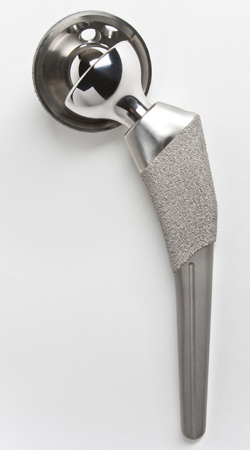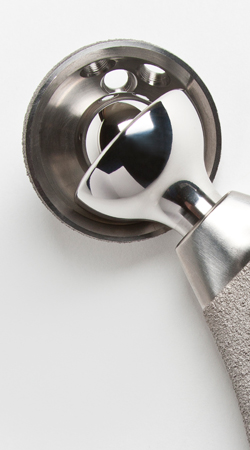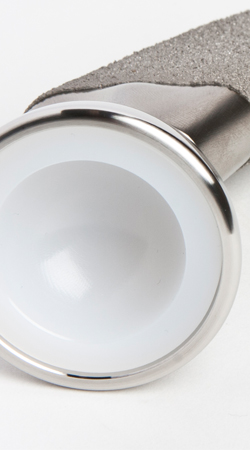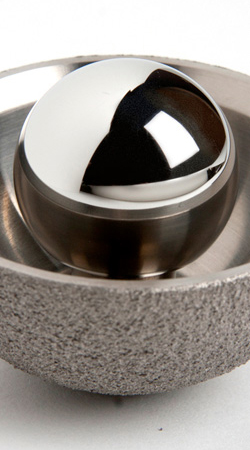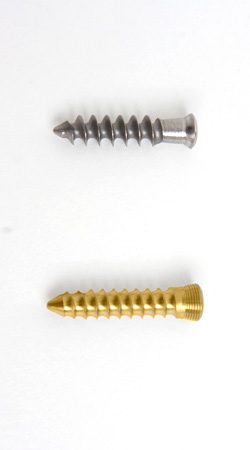Hip Innovation Technology Product Information
Reverse HRS Product Overview
The HIT Reverse Hip Replacement System (Reverse HRS) is a Metal-on-Polyethylene (MoP) reverse geometry hip prosthesis designed to improve stability at extended ranges of motion, and reduce the risk of dislocation. Like most conventional systems, the Reverse HRS consists of a femoral stem, an acetabular cup and a cobalt-chrome (CoCrMo) ball that articulates within a polyethylene liner. Unlike other systems, the ball seats on the acetabular cup instead of the femoral stem, and the polyethylene liner is attached to the femoral cup, which attaches to the femoral stem, instead of the polyethylene liner being attached to the acetabular cup (Figure 1). Despite this technological difference, the center of rotation of the Reverse HRS is similar to a normal physiological hip or a well-positioned Total Hip Arthroplasty (THA).
Figure 1.

As depicted in Figure 1, the current Reverse HRS Product Family includes component and monoblock designs.
Reverse HRS Design Rationale
By alternating the placement of the ball onto the acetabular cup instead of the femoral stem, the ball maintains constant contact with both, the acetabular component and the femoral component. As a result of this constant contact, the Reverse HRS can maintain stability of the hip at extended ranges of motion and thus minimize the risk of dislocation. This design change also reduces high contact stresses across the hip joint, thereby distributing wear evenly across the contact surface of the polyethylene liner and at the same time, minimizing edge loading (Figure 2). In addition, because the polyethylene liner is composed of highly cross-linked polyethylene (HXLPE), the risk of osteolysis and aseptic loosening due to wear debris generation is further reduced.
Figure 2.


